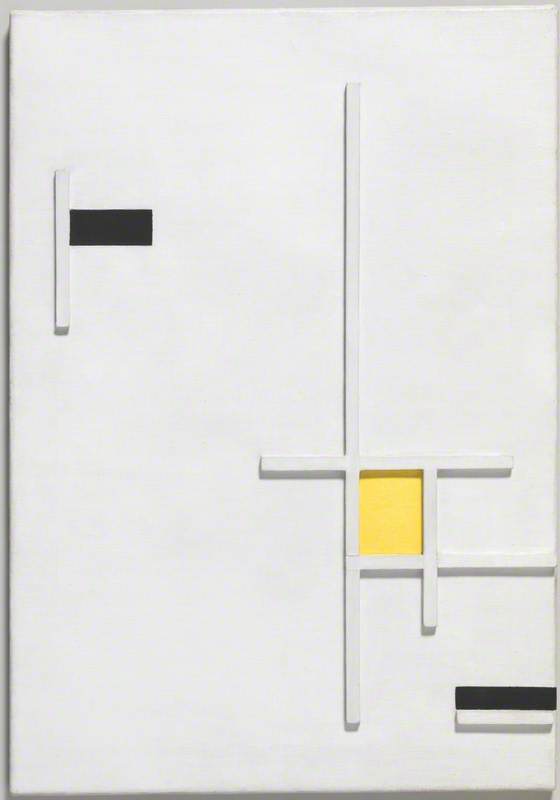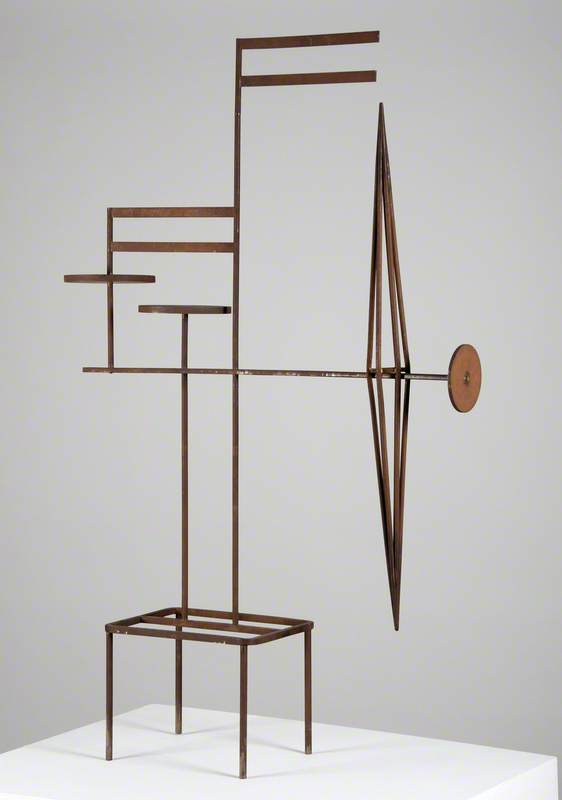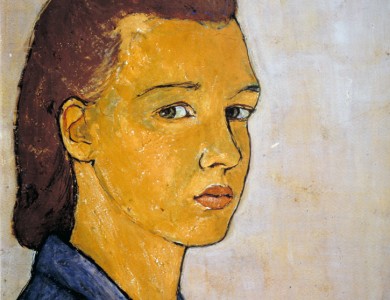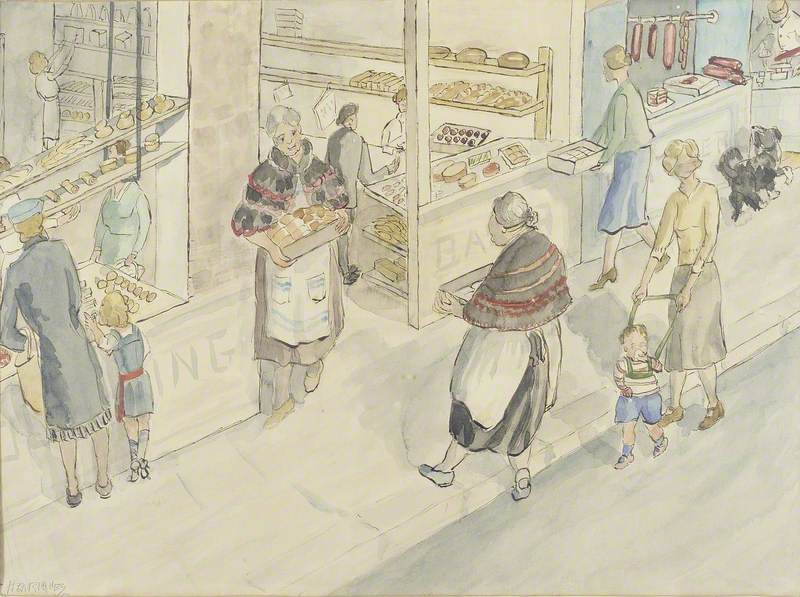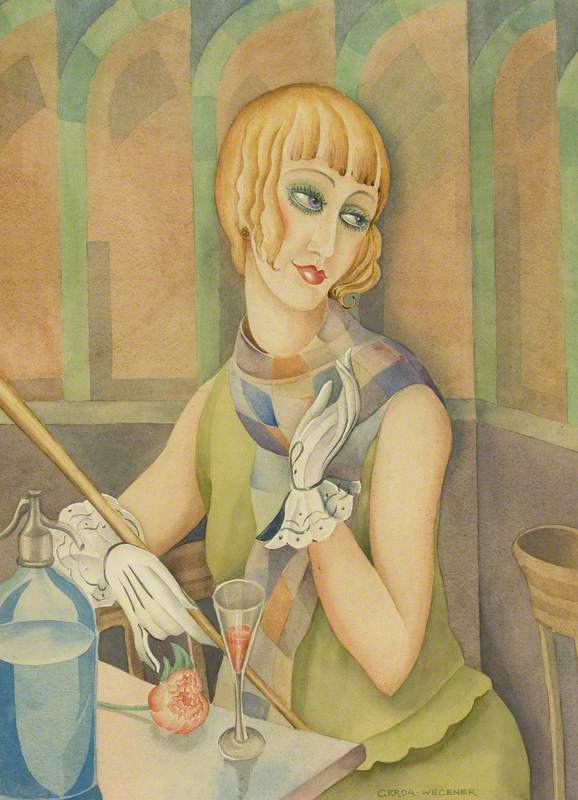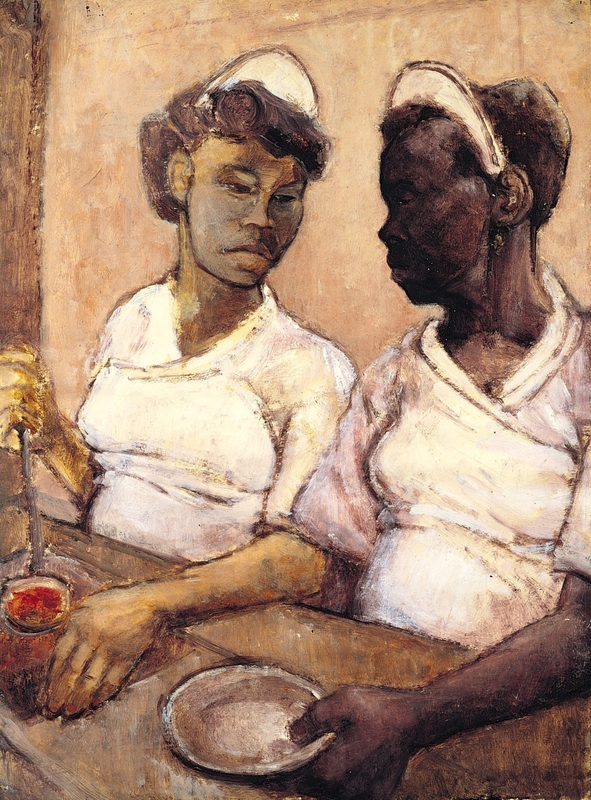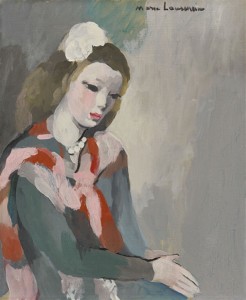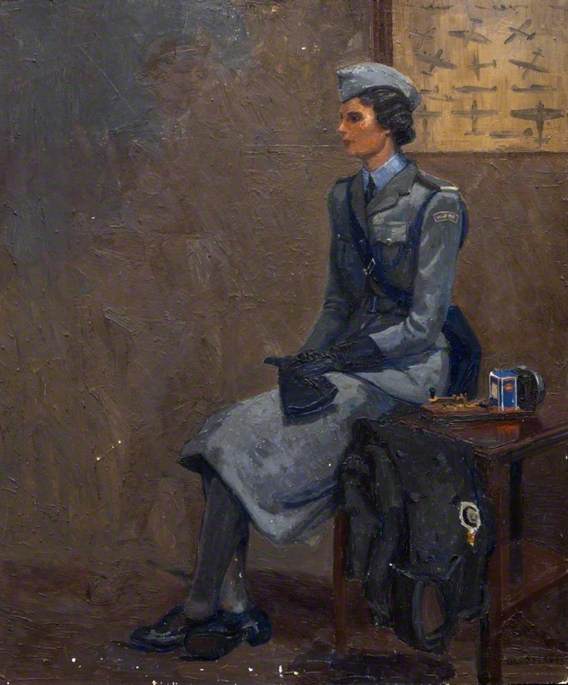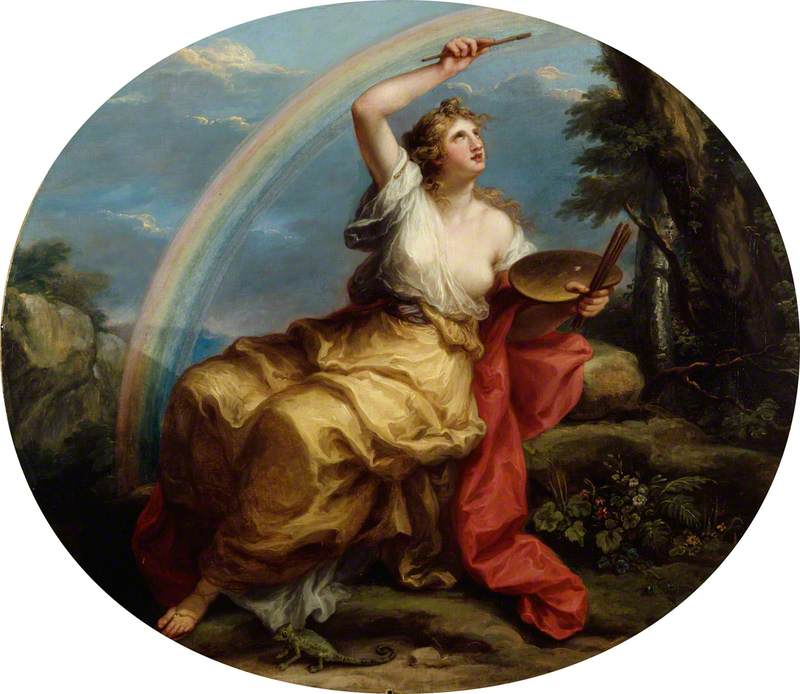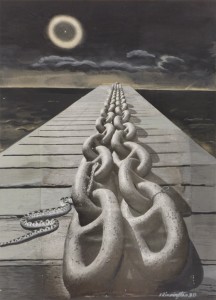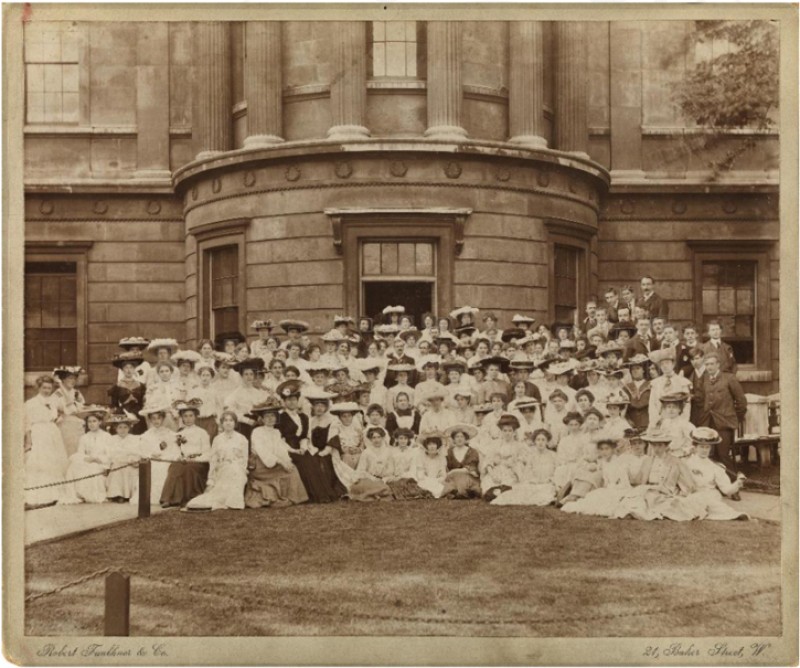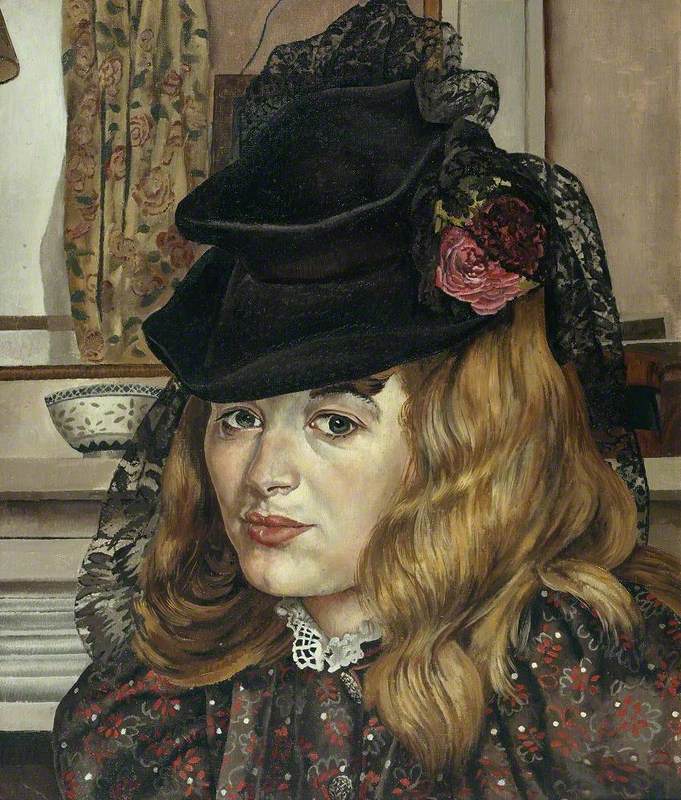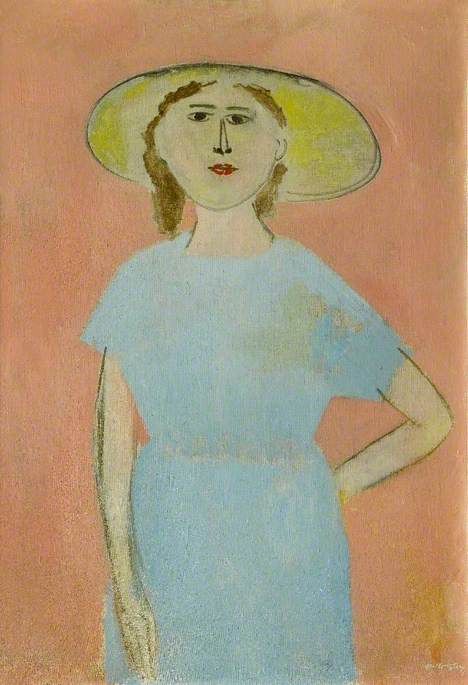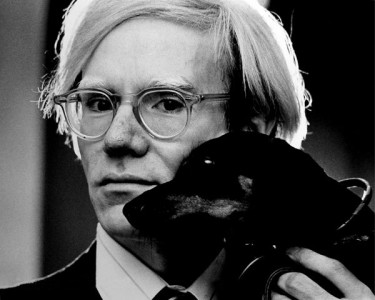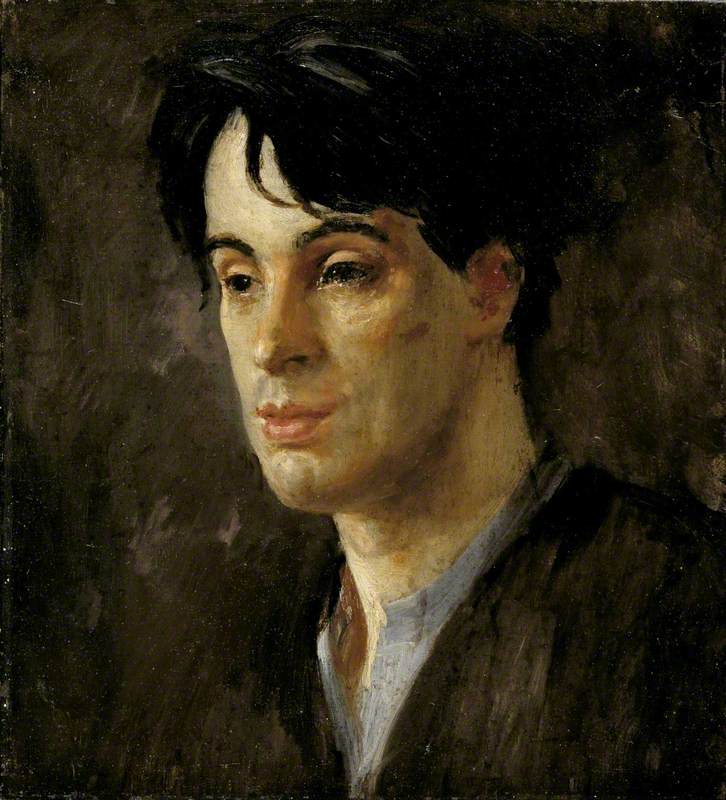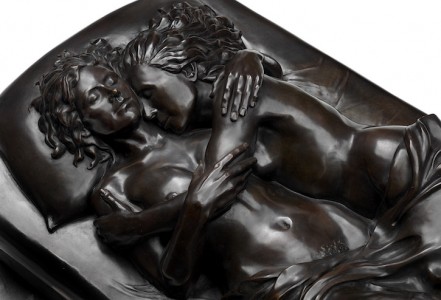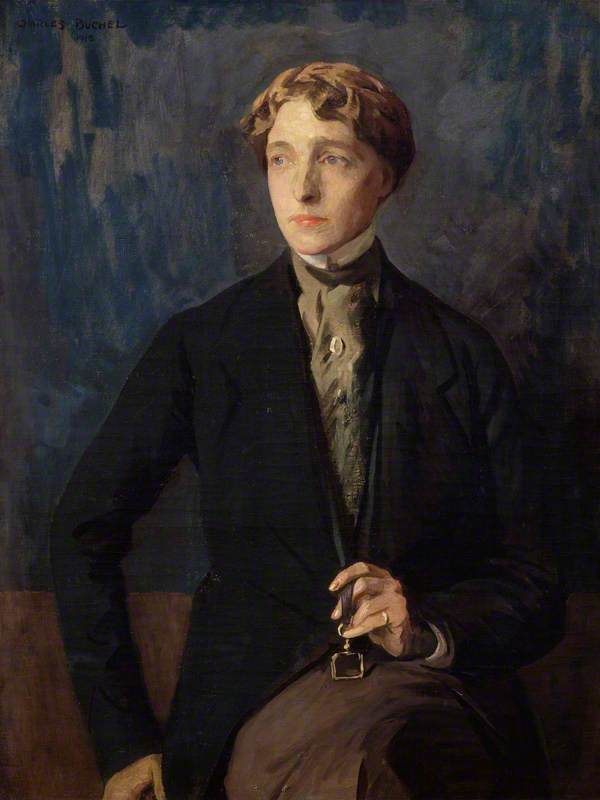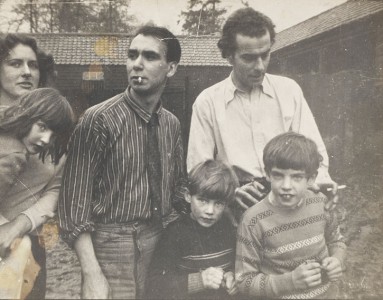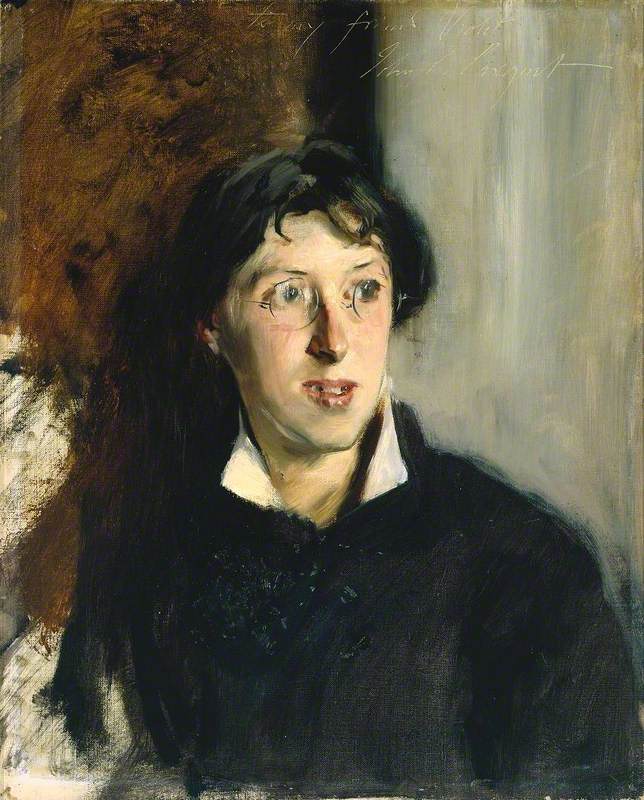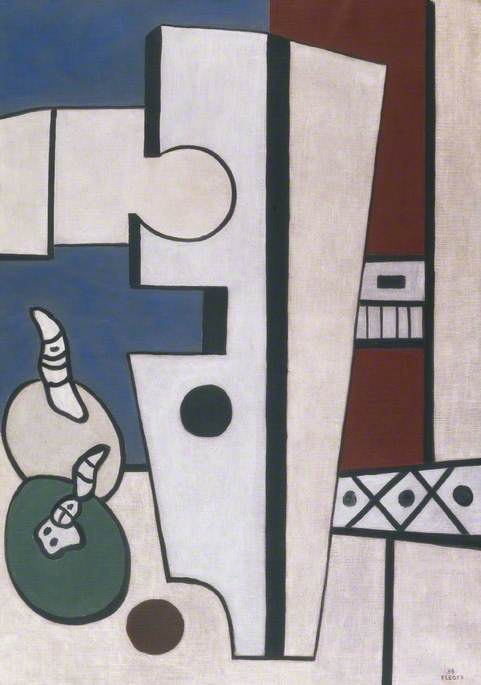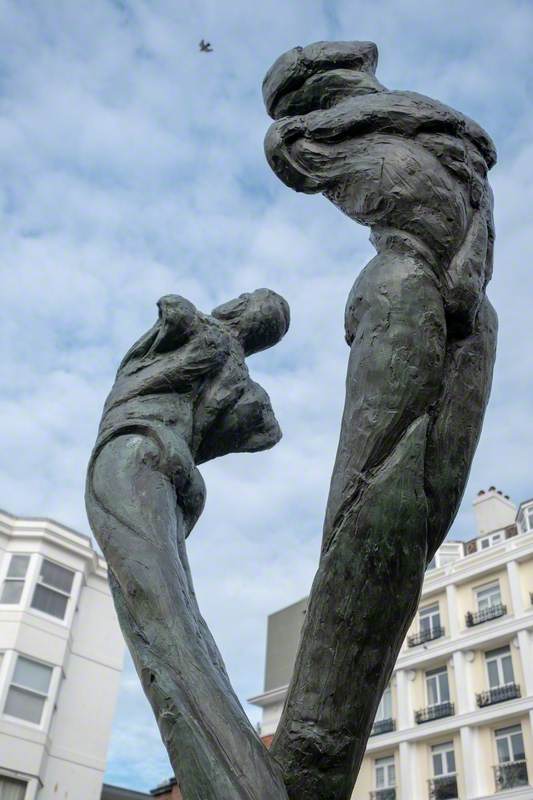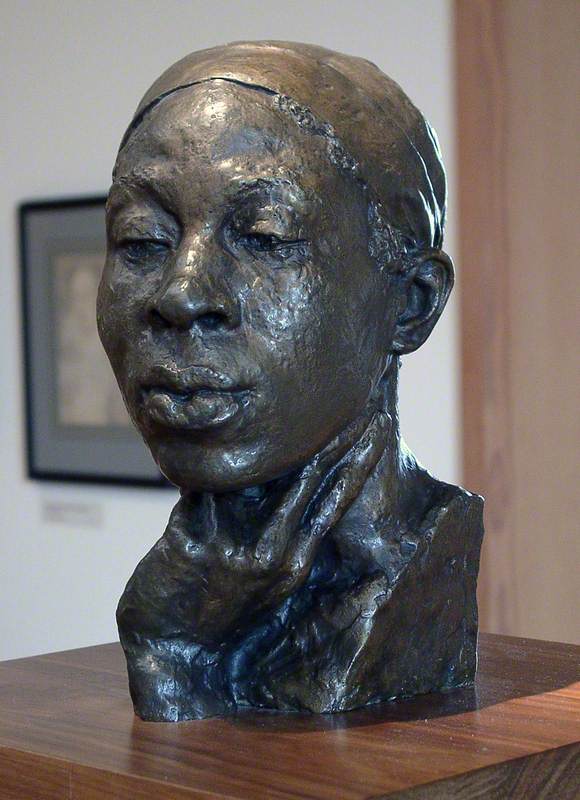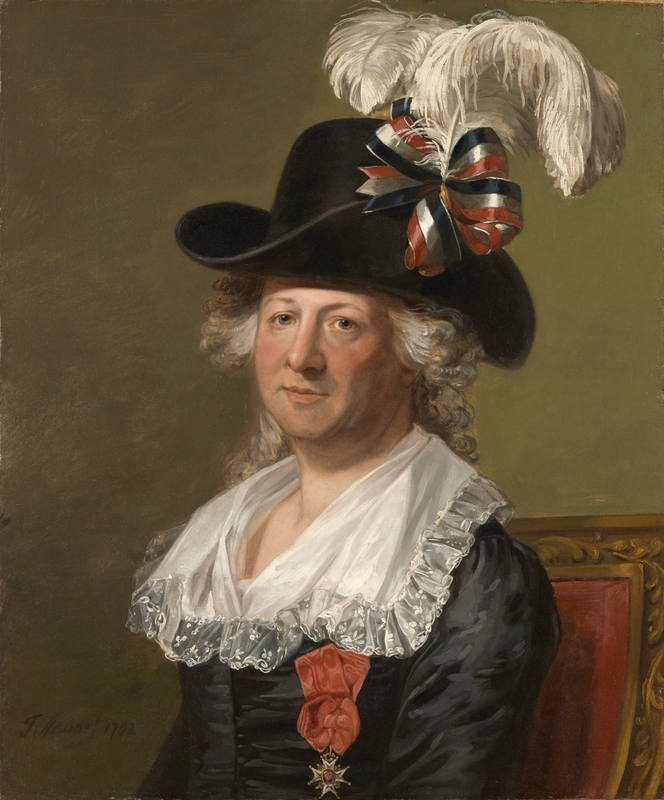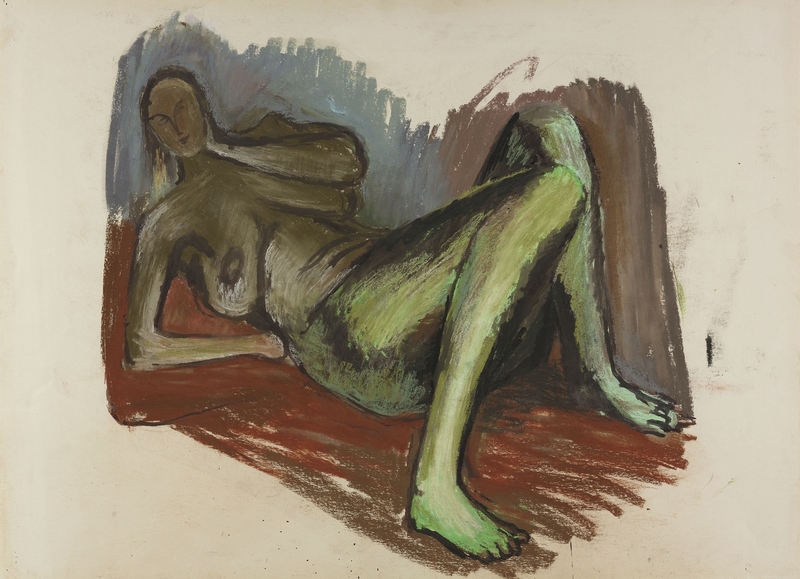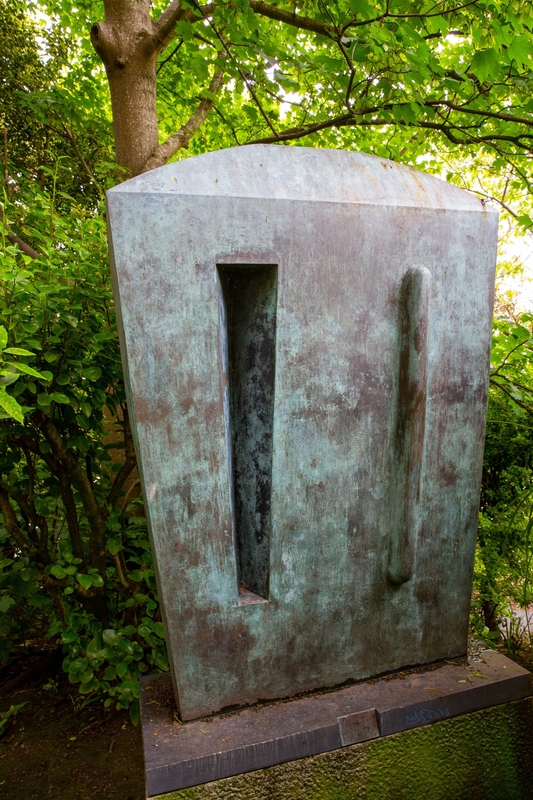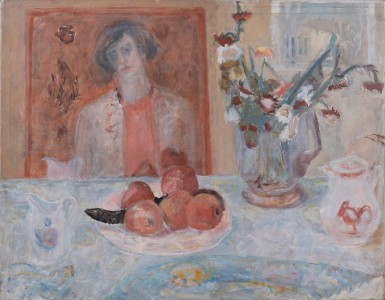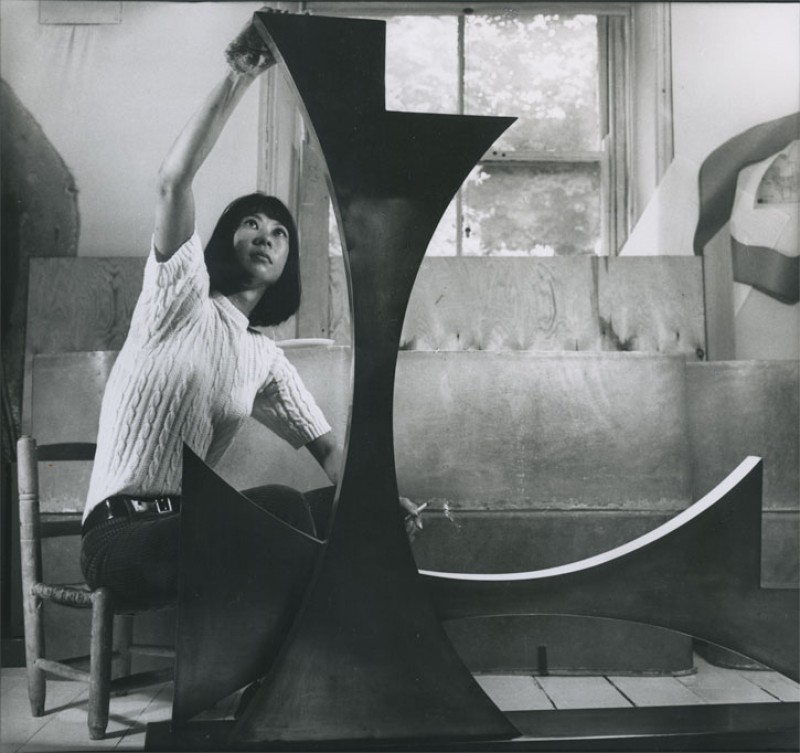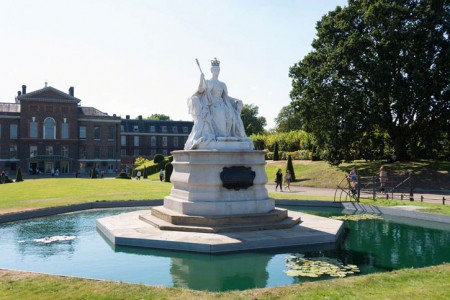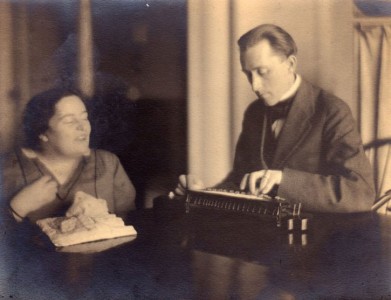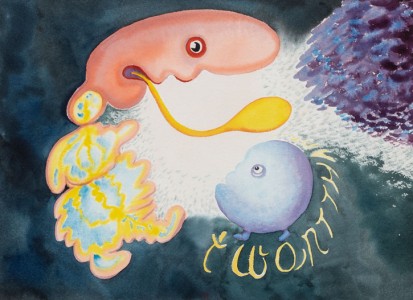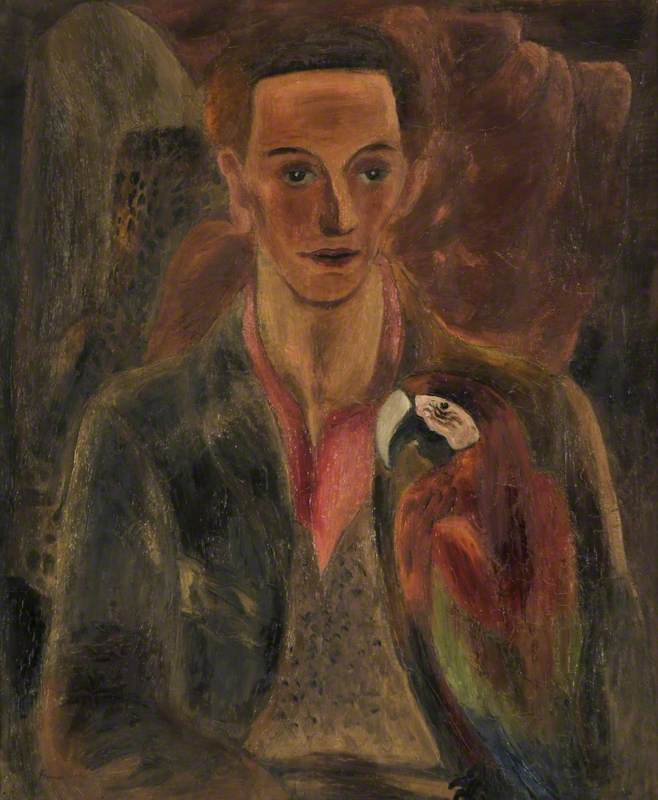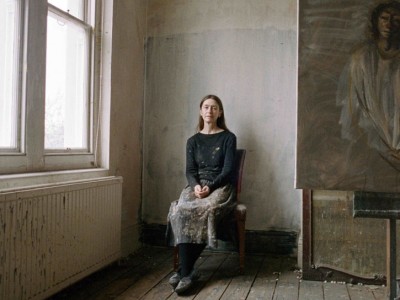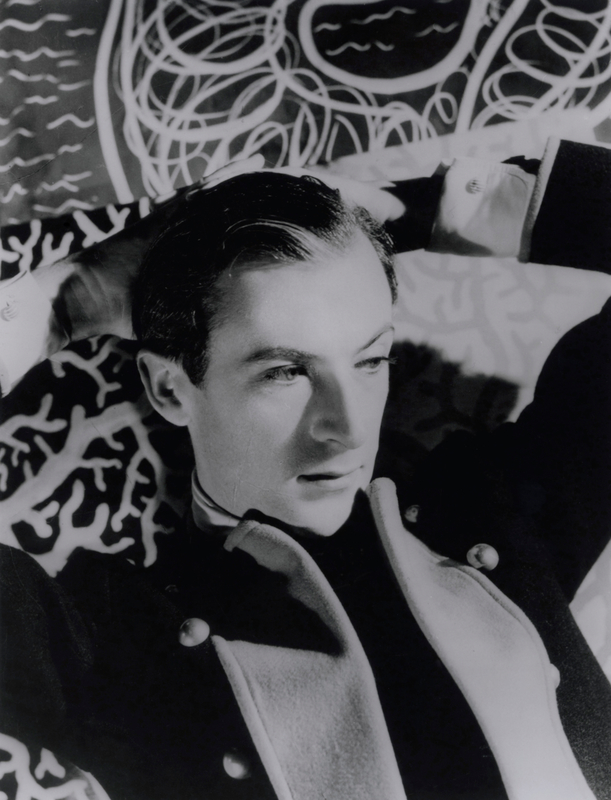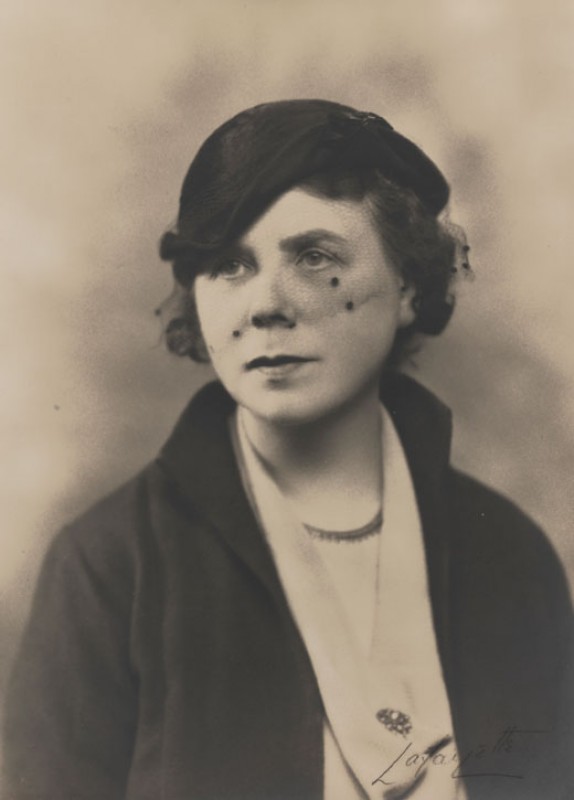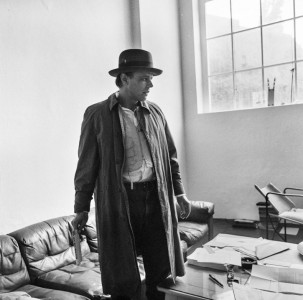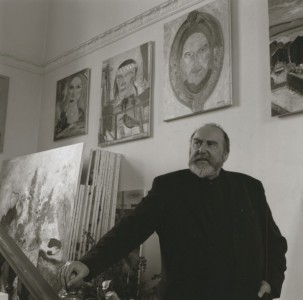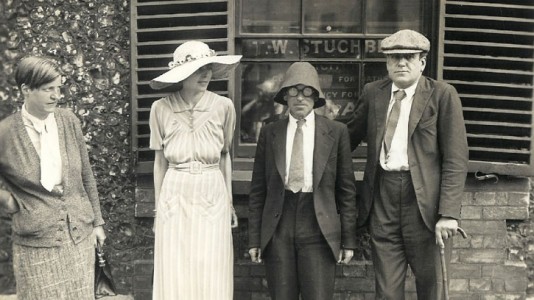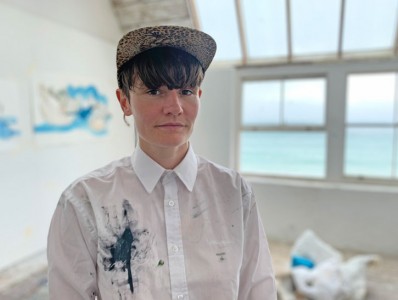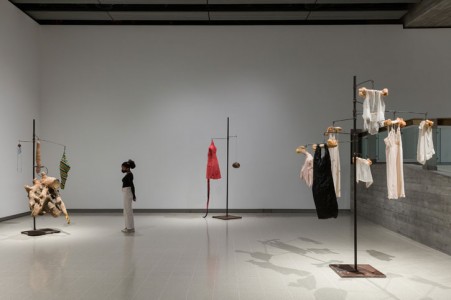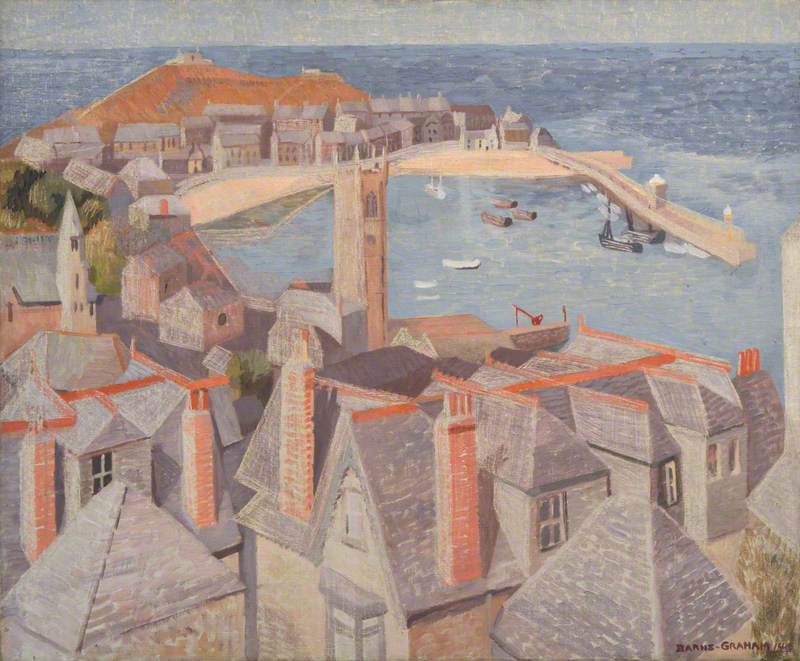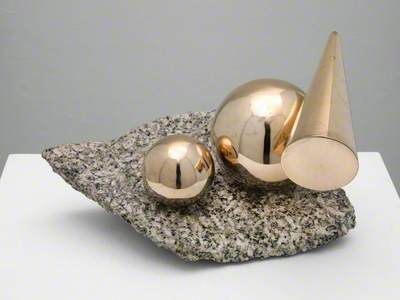'I am no painter, I don't see form, I only see space, movement and light.'
– Marlow Moss, quoted from memory by her partner A. H. Nijhoff
Marlow Moss (1889–1958) is a figure of great significance to the histories of modern art, and the LGBTQ+ community specifically. She was a London-born British artist who undertook her seminal training in interwar Paris, and was closely associated with the Neo-Plasticist Piet Mondrian. She lived and worked between France, the Netherlands, and Cornwall in the UK.
Marlow Moss (with cravat and cigarette)
c.1950s, black and white photograph by Stephen Storm, private collection 
Her practice as a Constructivist encompassed painting, sculpture and drawing. Although she is not extensively represented in British public art collections, she is now often included in survey books and exhibitions of neglected female and queer artists.
Moss's legacy as an artist and LGBTQ+ historical figure is felt today. In 2019, she was celebrated by the drag-artist Sasha Velour in a 'Tate Shots' video.
The commentary is intersected with footage of Moss's work Composition in Yellow, Black and White projected onto Velour's face.
Still from 'LGBTQ+ Icons at Tate Britain – Sasha Velour, Munroe Bergdorf and Leo Kalyan'
2019, still of video footage directed by Samuel Douek for Tate Shots 
As well as a tribute to Moss, this imagery connects to works by the artist's mentor Fernand Léger, for example, his Young Girl Holding a Flower, in which the relationship between humanity and abstraction is explored.
Velour explains the appeal of the Moss work:
'I feel, as a queer person, as a non-binary person... [Composition in Yellow, Black and White by Marlow Moss] is accessible – because I find geometry and colour more reliable categories than a man or a woman. In some ways, I can see myself more in a square of yellow than I can in a drawing of a woman or a man'.
– Sasha Velour, in TateShots
I am using female pronouns for Moss, as did her partner the Dutch author Netty Nijhoff in published writing and film footage. However there is an argument that a gender-neutral pronoun might be more appropriate, and as language conventions evolve this is becoming more common. Moss could now be considered trans-male, although this terminology was not available during her lifetime, and it is not known if she would have adopted it.
In 2018 Leeds Art Gallery adjusted a wall label for Spatial Construction in Steel to avoid pronouns altogether, and, following Velour's mode, a recently released Tate audio description of White and Yellow has opted for 'their'. Moss has a masculine appearance in a series of iconic portrait photographs taken by Nijhoff's son Stephen Storm.
It is apparent that she created a queer identity, with a distinct sartorial style, after abruptly leaving London's Slade School of Art in 1919. She was known personally and professionally as Marlow Moss from this time onwards – although she is listed as 'Marjorie Moss' in the first issue of Abstraction-Création: Art Non-Figuratif in 1932, an incident that could be considered 'deadnaming' now. She was commonly addressed as 'Miss Moss'; whether she liked this or not, the words have a pleasing phonic rhythm and suggest perhaps a duality or equivalence.
A statement by ‘Marjorie Moss’ in French
1932, published in 'Abstraction-Création: Art Non-Figuratif', Issue 1, Paris 
After a period of reckless living in 1920s London, and what Nijhoff later described as 'dangerous friendships', Moss moved to Paris and attended Léger's atelier at the Académie Moderne. By 1929 she was in the same circles as Mondrian, and the following year she made her first major contribution to the development of the Constructivist aesthetic – the double-line – simply parallel lines in close proximity. Her thinking, that she presented to Mondrian upon his written request, was that the then customary single-line grid of Neo-Plasticism split a composition up, rendered it static and prevented it from visually expanding outwards (an effect she sought).
Composition with Double Line and Yellow
1932
Piet Mondrian (1872–1944) 
Mondrian was impressed enough that in 1931 he nominated Moss for founding membership of the new Association Abstraction-Création, and began to experiment with the double-line himself, as can be seen in works such as Composition with Double-Line and Yellow. The double-line is a recurring motif in Moss's oeuvre, and appears in relief collages such as White and Yellow, and later sculptural work, such as Spatial Construction in Steel. It can be characterised as Moss's queering of the Constructivist aesthetic – and related directly to her non-binary persona.
Marlow Moss and Netty Nijhoff, outside their home in Gauciel
c.1937, black and white photograph by unknown photographer
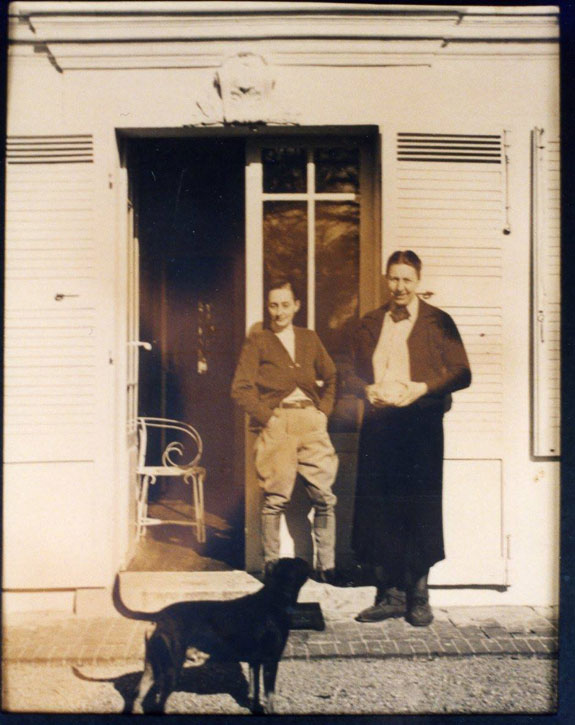
'The desire to love and be loved makes all things beautiful!'
– Marlow Moss, in a letter to her friend the artist Paule Vézelay, 14th April 1955, Tate Archives
There is anecdotal evidence to suggest Moss had many relationships with women throughout her life, but Nijhoff was her constant companion from their first meeting through Mondrian in Paris, apart from an unavoidable separation during the war. Afterwards the pair lived together again in the small Cornish village of Lamorna, with frequent trips to Paris, and the Netherlands where Nijhoff had a house and a houseboat on the canals of The Hague.
Netty Nijhoff and Marlow Moss in Lamorna
c.1950, black and white photograph by unknown photographer 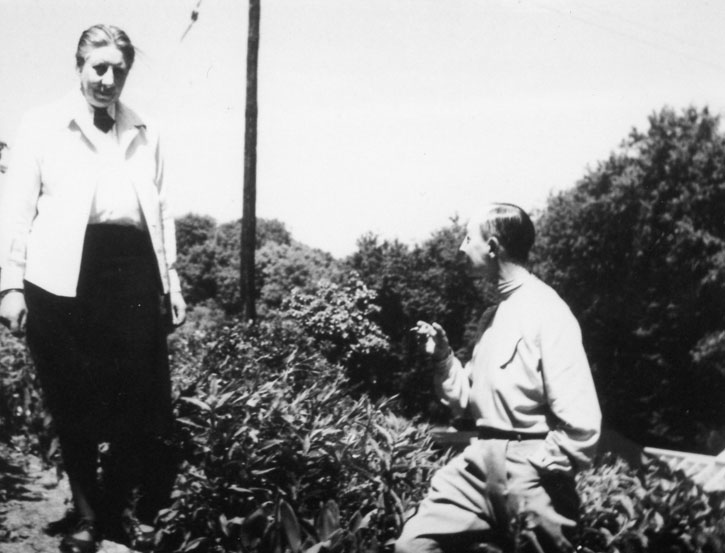
They had a wide circle of European friends, including many LGBTQ+ figures, and were intending on returning to live in France rather than go to New York as Mondrian had advised. However, by the 1950s Moss had at last found some professional traction in London, having been roundly ostracised by the famous St Ives coterie of modern artists (Ben Nicholson ignored her attempts, on Mondrian's advice, to make contact in the 1940s). Moss exhibited in several group shows and found representation in London with Erica Brausen, another wartime refugee and lesbian.
Solo shows were at Brausen's Hanover Gallery in 1953 and 1958 and then, after Moss's death, there were retrospectives at the Gimpel & Hanover in Zürich, and at Gimpel's in London in the 1970s, as well as at the Carus Gallery in New York.
A work such as Balanced Forms in Gunmetal on Cornish Granite demonstrates that Moss's aesthetic is not without Surrealist elements, and is reminiscent of Paul Nash's Equivalents for the Megaliths.
In Moss's work, the Platonic forms, spheres (one pierced, although this can't be seen in the image reproduced here) and a cone, cast in an alloy of copper, tin and zinc originally intended for guns, are mounted atop a roughly hewn piece of natural stone.
The constituent arrangement of this sculpture has been recorded in different configurations, causing confusion for curators and cataloguers, and even when fixed its appearance, of course, varies according to the viewpoint. It is perhaps a rumination on the eternal/conceptual and earthly/natural – and one cannot help but look for metaphors – however, unlike her more well-known British contemporaries Nicholson and Nash, Moss did not allow any illustrative figuration.
In 1932, Moss wrote '...natural forms contain, in effect, an element of an unchanging and universal truth, this means that these forms are composed of two elements, that is, one changeable element, in that they are visible forms, and one unchangeable element, in that they belong to this universal truth, which is not visible. Their true value is therefore not found in their visible form but in the relation that exists between this form and the universe... [I aim] to construct pure plastic art that will be able to express in totality the artist's consciousness of the universe.'
Moss saw Constructivism as an artistic lingua franca that overrides both personality and biography.
You can find out more about the life and work of Moss in the Eiderdown Books publication Marlow Moss as part of the Modern Women Artists collection.
Lucy Howarth, art historian, researcher, writer, curator and author of Marlow Moss published by Eiderdown Books
